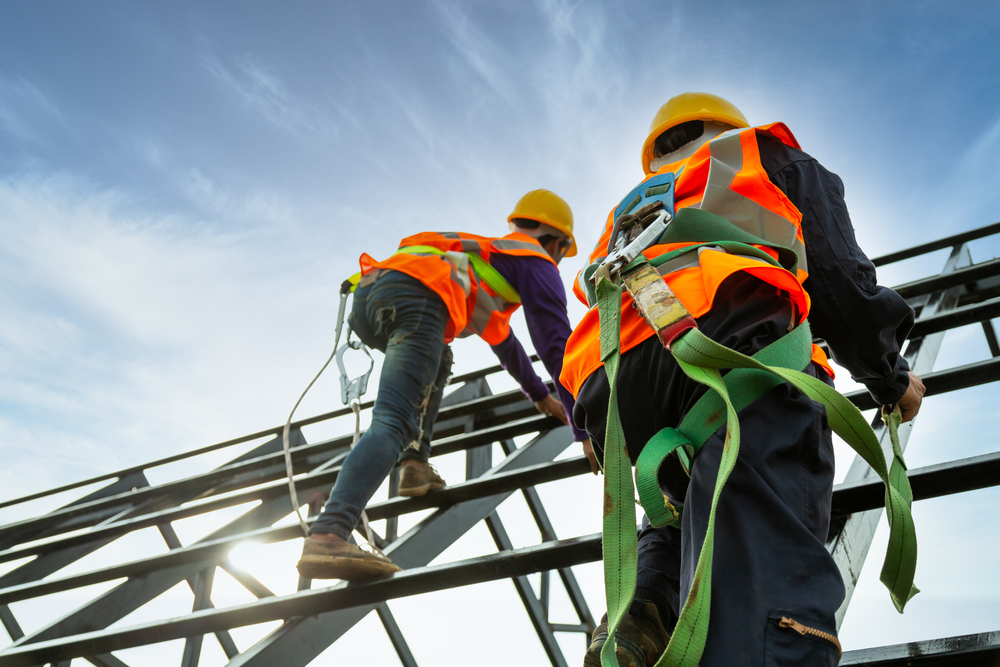Safety is not just a priority; it’s a fundamental value that shapes the culture and operations of every successful organization. In industries where fieldwork and physical tasks are routine, such as construction, telecommunications, and infrastructure development, prioritizing safety through robust programs and a safety-first approach is imperative.
Understanding Safety Program Implementation
This Safety program encompasses a range of activities and strategies designed to identify and mitigate risks, prevent accidents and injuries, comply with regulatory requirements, and promote a culture of safety awareness and responsibility among employees. Critical elements of safety program implementation include:
- Risk Assessment and Management: Conduct thorough risk assessments to identify potential hazards, assess their severity and likelihood, and develop risk mitigation strategies and controls. This includes evaluating workplace conditions, equipment safety, environmental factors, and human factors that could contribute to accidents or incidents.
- Safety Policies and Procedures: Developing and implementing clear and concise safety policies, procedures, guidelines, and protocols that outline expectations, responsibilities, and best practices for maintaining a safe work environment. This includes safety rules for specific tasks, emergency response plans, safety training requirements, and reporting procedures for incidents or near-misses.
- Safety Training and Education: Providing comprehensive training and education programs to equip employees with the knowledge, skills, and awareness necessary to identify hazards, follow safety protocols, use safety equipment properly, and respond effectively to safety incidents or emergencies.
- Safety Culture and Engagement: Fostering a positive safety culture that values and prioritizes safety as a core organizational value. This involves promoting open communication about safety issues, encouraging employee participation in safety initiatives and committees, recognizing and rewarding safety achievements, empowering employees to take ownership of safety by reporting hazards, suggesting improvements, and contributing to safety planning and decision-making.
- Safety Monitoring and Evaluation: Implementing mechanisms for monitoring and evaluating safety performance, compliance with safety policies and procedures, incident reporting and investigation processes, near-miss reporting and analysis, safety audits and inspections, and safety metrics and indicators.
The Safety-First Approach
- Proactive Hazard Identification: Encouraging employees to actively identify hazards, assess risks, and take preventive measures to eliminate or control hazards before incidents occur.
- Continuous Training and Education: Providing ongoing training, education, and resources to inform employees about safety best practices, regulatory requirements, industry standards, and emerging safety trends.
- Empowerment and Participation: Empowering employees to take ownership of safety by involving them in safety committees, hazard reporting programs, safety suggestion programs, safety planning and decision-making processes, and safety culture initiatives.
- Leadership and Accountability: Demonstrating leadership commitment to safety by setting clear expectations, leading by example, allocating resources for safety programs, promoting open communication about safety concerns, and holding individuals and teams accountable for safety performance.
Zero Incidents Goal
- Prevention: Proactively identifying and addressing potential hazards, risks, and unsafe conditions before incidents or injuries occur.
- Training and Awareness: Ensuring that employees are well-trained, informed, and aware of safety protocols, procedures, emergency response plans, and safety resources.
- Compliance: Adhering to regulatory requirements, industry standards, best practices, and internal policies related to safety management, risk mitigation, and incident prevention.
- Continuous Learning: Encouraging a culture of continuous learning, feedback, reflection, and improvement by analyzing incidents, near-misses, lessons learned, and safety performance data to identify opportunities for enhancement.
- Communication and Engagement: Promoting open communication, transparency, trust, and collaboration among employees, supervisors, managers, safety professionals, contractors, customers, and stakeholders to create a shared commitment to safety excellence.
Our Commitment to Zero Incidents
- Safety Leadership: Our leaders lead by example, demonstrating a commitment to safety, promoting open communication, and providing the resources, support, and training necessary for a safety-first culture.
- Employee Engagement: We actively involve employees in safety initiatives, encourage their participation, value their input, recognize their contributions, and empower them to take ownership of safety.
- Continuous Improvement: We continuously evaluate our safety programs, policies, procedures, and performance metrics, identify areas for improvement, implement corrective actions, and share lessons learned to drive continuous improvement.
- Technology and Innovation: We leverage technology, data analytics, digital tools, automation, and innovation to enhance safety performance, monitor risks, predict trends, and prevent incidents.
- Collaboration and Partnerships: We collaborate with industry partners, safety professionals, regulatory agencies, community organizations, and stakeholders to share knowledge, exchange best practices, and collectively work towards achieving zero incidents.
Conclusion
Safety program implementation with a safety-first approach and a zero-incident goal is a journey, not a destination. It requires dedication, commitment, collaboration, and continuous improvement from everyone in the organization. At City Fiber Inc., safety is not just a program—it’s a way of life. We are committed to achieving our zero incidents goal through proactive measures, ongoing training, effective communication, and a culture where safety is ingrained in everything we do. We can create a safer, healthier, and more resilient workplace for our employees, contractors, customers, and communities.

